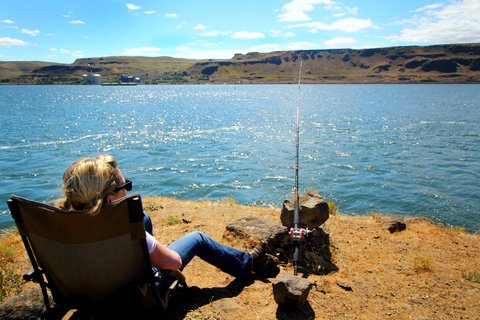
Every species of fish has its own way of taking a hook, whether it’s rigged with live bait or something artificial. Understanding the correct amount of slack is crucial to drawing and detecting the various strike types. Sometimes you have to give the fish some slack if you want it come your way.
The key is knowing what you’re targeting and what that specific species’ feeding pattern is at the given time. This will help to narrow your sensory expectations of what to feel at the bottom of the rod and what to see in the line and at the rod tip.
Soft plastics and other weedless jigs are the most troubling to understand, particularly when fishing for bass in months when bites are few and far between. When bass are finicky, they aren’t likely to hit a moving bait. When they are finicky and in weed cover, the situation becomes even more complicated. Pulling a weedless bait through heavy cover makes detecting strikes difficult, and knowing how much slack to leave is a necessary precursor to drawing those strikes.
If the line is too tight, the bass will feel the pressure when they pick up the lure, but if the slack is too limp, then you won’t detect the bass picking it up. You want to basically bring the line tight, then lower the rod very slightly, to give enough slack that the fish can pick up the bait without feeling tension, but you also want to feel if he moves with it. If the fish is barely picking the bait up then spitting it out, you will have to focus hard on where the line enters the water, and watch for any movement that doesn’t look like it is being produced naturally by the wind. Harnessing the touchy skillset of line control when fishing weedless for bass is a crucial part of putting fish in the boat on days when the bite is slow.
Vertical fishing from a boat with is simple. Drop the bait to the bottom, wait for the line to go slack, indicating that the weight touched the bottom, then reel up appropriately to find the right depth. Unless the weight isn’t heavy enough for wave conditions, it should hold the line fairly vertical, keeping tension on it constantly and making even the slightest ticking easy to detect. With artificial bait, such as in with vertical jigging, the fish may often hit as the jig falls, so watch for the line to move away from its straight drop.
With crankbaits, the amount of slack, or lack thereof, is self explanatory. Since these lures provide their enticement to fish through the act of cranking, you won’t have any slack. Sometimes you will briefly pause to let the lure sink or float to achieve desired depth, but the amount of slack should be kept to a minimum. Topwaters are a bit different, as they can be left still for prolonged periods of time to provoke a bite, but when bass or other fish hit these, you will see, hear, and probably feel it, and you will know exactly when to set the hook. Just know that in most cases where hard plastic is involved, slack is at a minimum.
There are also some instances using slack to the other extreme, such as when carp fishing. If using live bait, corn, dough, or other scent-oriented bait, many anglers will open the bail to prevent the giant fighting fish from pulling their rod in the water. Since carp tend to suck bait up and then run, the hook sets itself, so it is only a matter of watching as the line starts flying off the spool, then make sure the drag is set correctly, and engage the reel.








